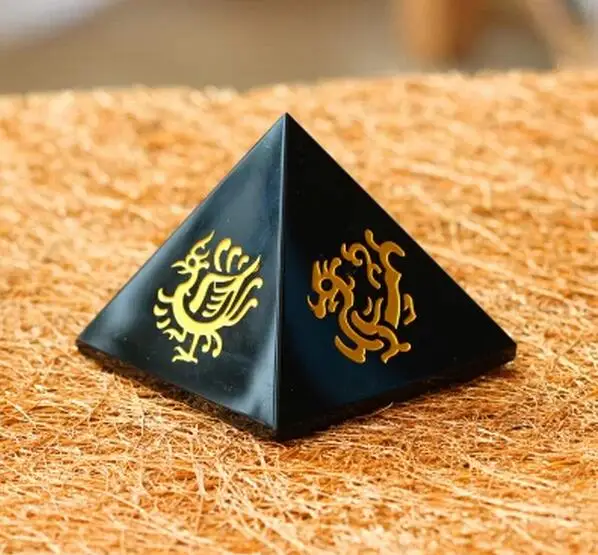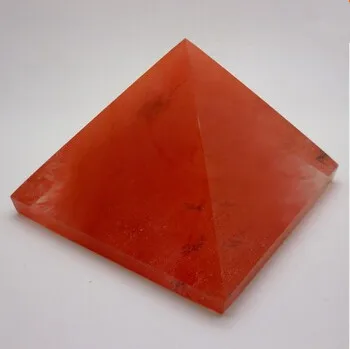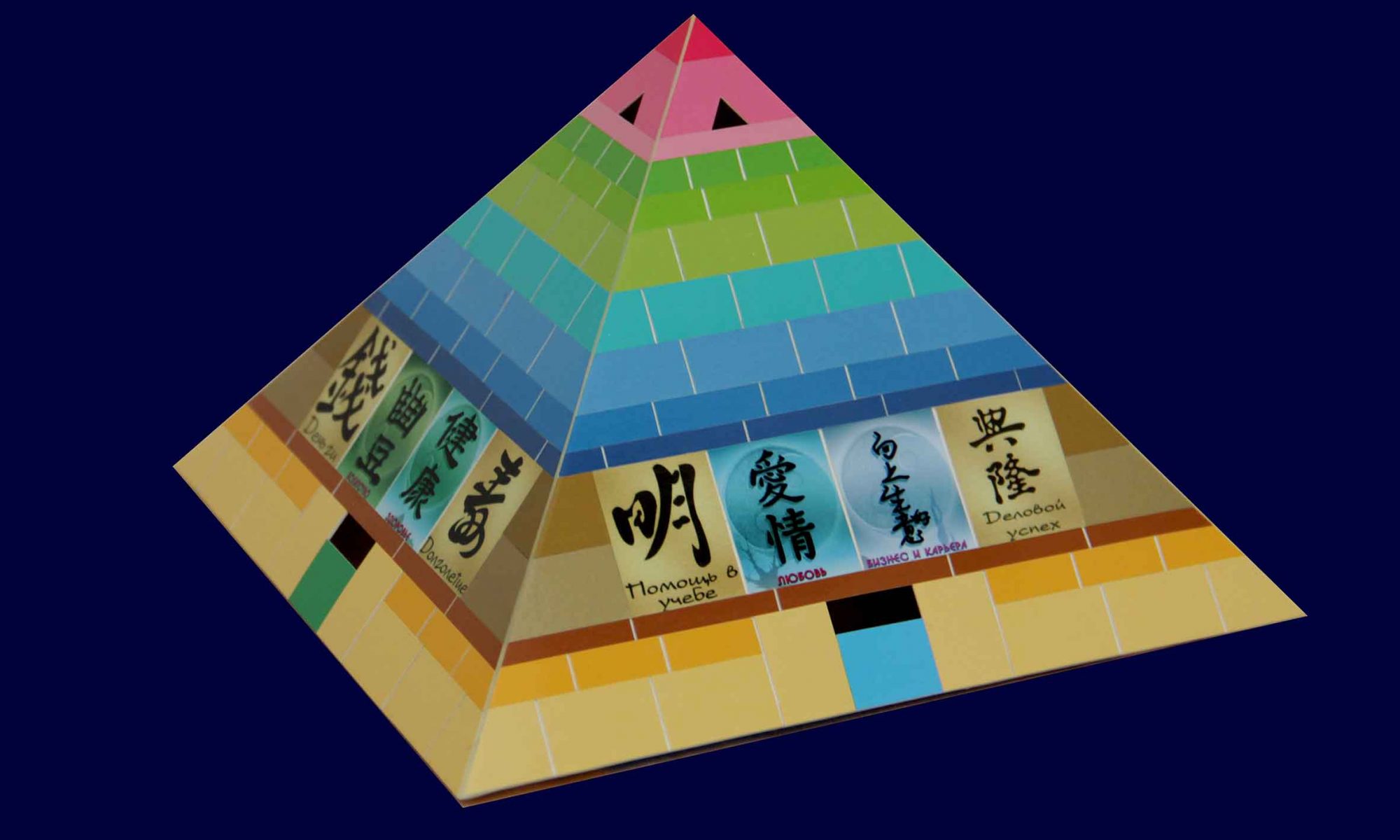Feng Shui is a traditional Chinese practice that aims to create harmony and balance in a living or working space.
While pyramids are not specifically part of traditional Feng Shui teachings, some people have incorporated pyramid-shaped objects or structures into their Feng Shui practices. Feng Shui pyramids: beauty and benefits
The pyramid shape is believed by some to have energetic properties that can enhance the flow of energy, known as “qi” or “chi,” in a space. It is thought that the shape of the pyramid can help facilitate the movement and circulation of energy, creating a more balanced and harmonious environment.
In Feng Shui, the placement of objects is crucial, so if you choose to incorporate pyramid-shaped objects, you would need to consider their placement in relation to the Bagua, which is an energy map used in Feng Shui. The Bagua divides a space into different areas, each corresponding to a specific aspect of life, such as wealth, health, relationships, and so on. Placing pyramid-shaped objects in the appropriate areas of the Bagua may be done with the intention of enhancing the energy associated with that particular aspect of life.
It’s important to note that Feng Shui is a complex and nuanced practice, and incorporating pyramid-shaped objects alone may not bring about significant changes in your life. Feng Shui is best approached by considering the holistic principles of the practice, which include factors such as the overall layout of a space, the use of color, the arrangement of furniture, and the integration of natural elements.
If you are interested in incorporating Feng Shui principles into your living or working space, it may be helpful to consult with a professional Feng Shui practitioner who can provide guidance tailored to your specific needs and goals.

There are various objects and structures that can be incorporated into Feng Shui practices to enhance the energy flow and create a harmonious environment.
Here are some examples:
Mirrors
Mirrors are commonly used in Feng Shui to reflect and expand energy. They can be strategically placed to bring more light into a space, create a sense of spaciousness, or redirect the flow of energy. However, it’s important to be mindful of what the mirror is reflecting, as it can double the energy of whatever it reflects.
Crystals
Crystals are believed to hold and radiate energy. Different crystals have different properties, and they can be used to enhance specific aspects of life. For example, rose quartz is associated with love and relationships, while citrine is often used to attract abundance and wealth. Crystals can be placed in specific areas of the Bagua or carried as personal talismans.
Indoor plants
Plants are considered to bring vibrant and fresh energy into a space. They can improve air quality, add a natural element, and symbolize growth and vitality. Choose plants with rounded or soft-edged leaves, as they are considered more Yin and soothing. Avoid plants with thorny or spiky leaves, as they may create a more aggressive energy.
Water features
Water is associated with wealth and abundance in Feng Shui. Incorporating water features such as aquariums, fountains, or small tabletop waterfalls can help activate the flow of prosperity energy. It’s important to keep the water clean and well-maintained to ensure positive energy.
Wind chimes
Wind chimes are commonly used in Feng Shui to disperse stagnant energy and create pleasant sounds that uplift the energy of a space. Metal wind chimes are often used to activate and balance energy, while bamboo wind chimes are believed to attract good luck and positive energy.
Symbols and artwork
Symbols and artwork can be used to enhance specific areas of the Bagua or to evoke certain emotions and energies. For example, a pair of Mandarin ducks can represent love and harmonious relationships, while a painting of a serene landscape can create a sense of peace and tranquility.
It’s important to remember that the effectiveness of these objects and structures in Feng Shui practices can vary depending on the individual, the specific context, and the overall harmony of the space. It’s always a good idea to approach Feng Shui holistically, considering the overall layout, colors, and arrangement of your space, in addition to incorporating specific objects.

What are some other ways to activate and balance energy in a space?
There are several ways to activate and balance energy in a space, aside from incorporating specific objects. Here are some additional methods:
Declutter and organize
Clutter can create stagnant energy and hinder the flow of positive energy. By decluttering and organizing your space, you allow energy to flow more freely. Keep your space tidy and eliminate unnecessary items to create a sense of spaciousness and clarity.
Use color consciously
Colors have different energetic qualities and can affect the mood and energy of a space. Use color intentionally to create the desired atmosphere. For example, warm colors like red and orange can promote energy and vitality, while cool colors like blue and green can create a sense of calmness and relaxation.
Balance the five elements
Feng Shui recognizes five elements—wood, fire, earth, metal, and water—that represent different energies. Each element has specific characteristics and can be associated with different aspects of life. Balancing these elements in your space can help create harmony. For example, you can incorporate wooden furniture, candles, plants, metal accents, and water features to represent and balance the elements.
Enhance natural light
Natural light is considered beneficial in Feng Shui as it brings positive energy into a space. Maximize natural light by keeping windows clean and free from obstructions. You can also use sheer curtains or blinds to allow light to filter in while maintaining privacy.
Consider the flow of furniture
The arrangement of furniture can influence the energy flow in a space. Ensure that furniture is arranged in a way that allows for easy movement and a clear path. Avoid blocking doorways or creating cramped spaces that hinder energy circulation.
Create a balanced yin-yang energy
Yin and yang represent complementary and opposing energies. Aim to create a balance between yin (passive, soft, and receptive) and yang (active, bright, and energetic) qualities in your space. For example, if a room feels too yang with bright lights and bold colors, you can introduce yin elements like soft fabrics, dimmer lighting, or gentle music to create a more harmonious balance.
Pay attention to the entrance
The entrance of a space is considered important in Feng Shui as it sets the tone for the energy that enters the space. Keep the entrance area clean, well-lit, and welcoming. Consider adding a focal point, such as an attractive piece of artwork or a plant, to draw in positive energy.
Remember, Feng Shui is a holistic practice, and it’s important to consider the overall balance and harmony of your space. Experiment with different techniques and adjustments to find what works best for you and your specific environment.

